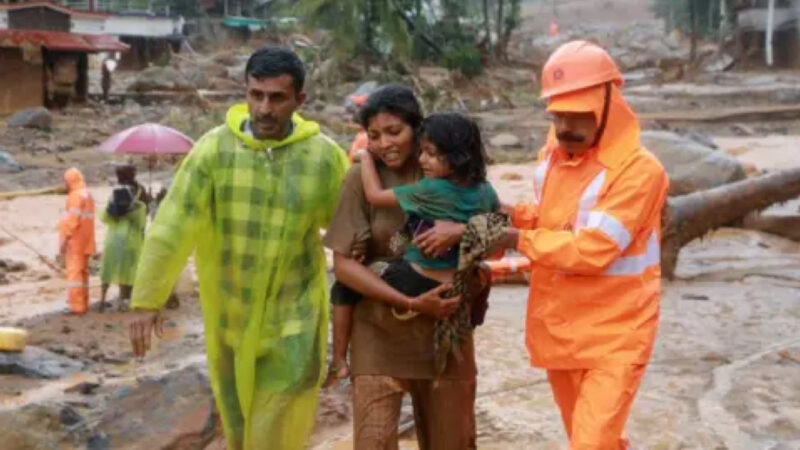Torrential monsoon rains have unleashed a devastating series of landslides in India’s southern state of Kerala, leaving a trail of destruction and death. At least 45 people have lost their lives, with hundreds more injured and thousands displaced. The disaster has brought the state to a standstill, with rescue efforts hampered by treacherous terrain and blocked roads.
The worst-hit district is Wayanad, where officials have confirmed 45 fatalities and reported that over 250 people have been rescued from the rubble. Many more are believed to be trapped, with rescue teams working tirelessly to locate survivors.
The Indian Prime Minister, Narendra Modi, has expressed his condolences to the families of the victims and announced a compensation package of $2,400 (200,000 rupees) for each affected family. The Indian Army has deployed over 200 soldiers to assist in the relief efforts, alongside state security forces and firefighters.
The region is bracing for more heavy rainfall and strong winds in the coming days, which could exacerbate the situation. The state’s disaster management agency has issued warnings of continued flooding and landslides.
The incident has also sparked concerns about the increasing frequency of natural disasters in India, with opposition leader Rahul Gandhi calling for a comprehensive action plan to address the growing issue. Experts attribute the rise in landslides to climate change, damming, deforestation, and development projects.
Kerala is no stranger to devastating floods and landslides, having experienced one of its worst floods in 2018 that killed nearly 500 people. The region’s monsoon rains are crucial for agriculture and water supplies, but they also bring destruction and loss of life.
As the recovery efforts continue, many are left wondering how to mitigate the impact of these natural disasters and prevent similar tragedies in the future.










Join our Channel...